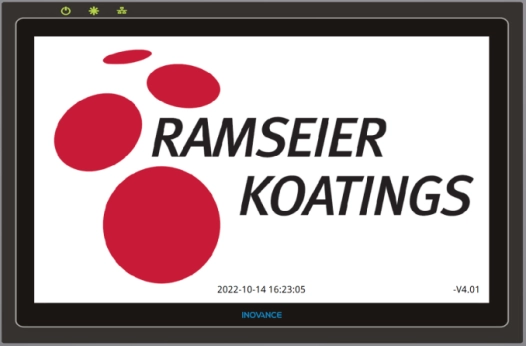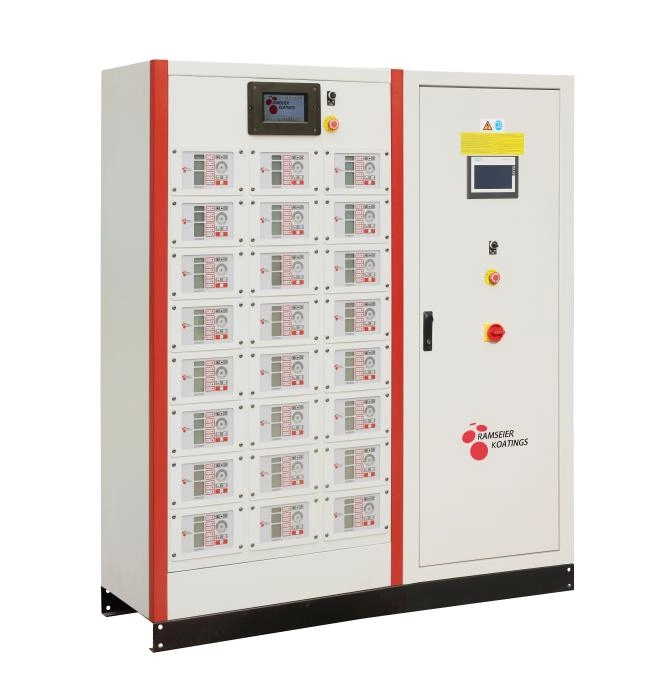Content Menu
● Understanding Data Management Systems in Spray Applications
>> What Is the Role of a DMS?
● Why Compatibility with Existing Spray Equipment Matters
>> Benefits of Compatibility
● Key Compatibility Considerations for Integrating Data Management Systems
>> Electrical and Mechanical Interface
>> Communication Protocols and Data Integration
>> Software Compatibility and User Interface
● Examples of Compatible Systems
>> Retrofit Intelligent Spray Control Kits
>> Integration with Farm Management Platforms
● Challenges in Ensuring Compatibility
>> Variation in Equipment Models and Ages
>> Calibration and Sensor Placement
>> Training and Support
● Steps to Ensure Compatibility When Implementing a DMS
>> 1. Assess Your Existing Equipment
>> 2. Identify DMS Solutions Designed for Compatibility
>> 3. Consult with Vendors and Experts
>> 4. Plan for Installation and Integration
>> 5. Train Operators and Establish Data Practices
● Future Trends in Spray Equipment and Data System Compatibility
● Common Questions and Answers
In modern agriculture and industrial spraying applications, efficient management of spray operations is critical. Integrating a Data Management System (DMS) with existing spray equipment is a transformative approach to optimize spray accuracy, chemical usage, and operational efficiency. This article explores how data management systems can be compatible with current spray machinery, the benefits of integration, technical considerations, and practical steps for successful implementation.

Understanding Data Management Systems in Spray Applications
Data Management Systems are software and hardware solutions designed to collect, analyze, and manage data generated during spraying operations. In agriculture, spray equipment often involves air blast sprayers, boom sprayers, and other specialized applicators. These systems capture detailed information such as spray volumes, nozzle performance, GPS location, speed, and environmental conditions, converting raw operational data into actionable insights.
What Is the Role of a DMS?
A DMS supports:
- Precise chemical application by adjusting spray volumes based on crop or surface needs.
- Real-time monitoring and control of spray equipment.
- Data recording for regulatory compliance and operational optimization.
- Historical data analysis for improving future spray schedules and reducing waste.
Why Compatibility with Existing Spray Equipment Matters
Many growers and operators have invested heavily in spraying hardware. Replacing all equipment to accommodate a DMS is costly and inefficient. Therefore, compatibility with existing spray equipment is a key factor driving DMS adoption.
Benefits of Compatibility
- Cost Efficiency: Upgrading existing sprayers with DMS reduces capital expenditure.
- Minimal Disruption: Operators can maintain current equipment while enhancing functionality.
- Faster Adoption: Familiarity with equipment minimizes the learning curve.
- Sustainability: Precise application minimizes chemical use, reducing environmental impact.
Key Compatibility Considerations for Integrating Data Management Systems
Electrical and Mechanical Interface
Existing spray equipment varies widely in its mechanical setup, nozzle types, and electrical controls. For successful DMS integration, the system should support connections to:
- Variable-rate solenoid valves on each nozzle for individualized control.
- Sensors for canopy detection, speed, and environmental conditions.
- Spray controllers for flow rate modulation.
Many modern retrofit DMS kits are designed to mount on existing sprayers without altering structural components significantly. For example, intelligent spray systems can interface with standard air blast sprayers by adding sensors and valve actuators controlled via a central system.
Communication Protocols and Data Integration
The DMS and spray equipment must communicate effectively. Key aspects include:
- Vendor-Neutral Platforms: Newer DMS platforms are designed to be compatible with multiple brands and equipment types, using standard communication protocols.
- Data Formats: Standardized data output formats facilitate easy integration with farm management software and cloud platforms.
- Wireless and Wired Connectivity: The system may connect via Wi-Fi, Bluetooth, CAN bus or wired interfaces.
Software Compatibility and User Interface
The DMS should provide an intuitive user interface, often via tablets or mobile devices, for operators to monitor and adjust spray parameters. Compatibility also extends to data export and cloud synchronization capabilities, allowing integration with broader farm or industrial data ecosystems.
Examples of Compatible Systems
Retrofit Intelligent Spray Control Kits
Research-driven retrofit kits have been developed that transform conventional sprayers into precision spraying machines. These kits typically include:
- Laser or LiDAR sensors to detect plant canopy size and density.
- GPS for location and speed tracking.
- Pulse Width Modulation valves for precise nozzle control.
- Tablet-based user interfaces to configure and monitor spraying.
Such systems allow existing sprayers to operate with precision comparable to new, high-tech equipment but without the cost of replacement.
Integration with Farm Management Platforms
Many DMS solutions offer integration with platforms like Deere Operations Center or third-party agricultural management software, providing seamless data flow and analytics support.
Challenges in Ensuring Compatibility
Variation in Equipment Models and Ages
Older equipment may lack the electronic control units or sensors needed for direct integration. Adapting these machines may require additional hardware upgrades or custom engineering.
Calibration and Sensor Placement
Sensors must be precisely mounted and calibrated according to the sprayer and crop type to ensure accurate data collection and spray application.
Training and Support
Even with compatible systems, operators need support and training to effectively use the new technology, interpret data, and maintain equipment.
Steps to Ensure Compatibility When Implementing a DMS
1. Assess Your Existing Equipment
Take inventory of the spray equipment types, ages, and control systems in use. Review manufacturer manuals to identify interface capabilities and constraints.
2. Identify DMS Solutions Designed for Compatibility
Focus on solutions labeled as retrofit kits or vendor-neutral systems capable of interfacing with various spray brands and models.
3. Consult with Vendors and Experts
Discuss your equipment specifics with DMS providers. They can offer tailored recommendations and validation for compatibility.
4. Plan for Installation and Integration
Include sensor placement, wiring, and any necessary hardware modifications in your implementation plan.
5. Train Operators and Establish Data Practices
Ensure users understand how to operate the new system and how to manage and utilize collected data effectively.
Future Trends in Spray Equipment and Data System Compatibility
Emerging technologies emphasize:
- Increased use of IoT (Internet of Things) connectivity for real-time data streaming.
- Artificial Intelligence and machine learning for predictive spraying.
- Enhanced sensor technology for better plant characterization.
- Fully automated spray systems integrated with autonomous vehicles.
The focus on compatibility will continue, with systems likely becoming more modular and flexible to support diverse equipment.
Common Questions and Answers
Q1: Can a DMS be added to any existing sprayer?
A1: Most modern retrofit DMS kits are designed to be compatible with a wide range of sprayers, especially air blast models. However, extremely old or mechanically simple sprayers may require additional modifications.
Q2: Will integrating a DMS require replacing all the nozzles?
A2: Not necessarily. Many systems integrate with existing nozzles if they have variable flow rate capability via solenoid valves. If not, some nozzles may need replacement.
Q3: How does the DMS improve chemical application efficiency?
A3: By using sensors to detect plant canopy dimensions and density, DMS controls nozzle output in real time, reducing over-application and minimizing drift and wastage.
Q4: Is the data from DMS secure and accessible remotely?
A4: Yes, most modern systems support cloud synchronization with secure access, enabling remote monitoring and data analysis.
Q5: What are the typical savings or benefits seen after DMS integration?
A5: Chemical use can be reduced by 30% to 90%, spray drift and off-target losses significantly decrease, and operational costs including labor and fuel are often lowered.

[1] https://www.precisionfarmingdealer.com/articles/5329-technology-corner-smart-applys-intelligent-spray-control-system-reduces-chemical-and-water-use-by-50
[2] https://patents.google.com/patent/CN106021209A/zh
[3] https://progressivecrop.com/2021/03/12/a-new-generation-of-precision-spray-technology/
[4] https://blog.csdn.net/weixin_45386937/article/details/113763997
[5] https://www.ramseierkoatings.com/what-makes-a-data-management-system-ideal-for-automatic-spray-booths.html
[6] https://patents.google.com/patent/CN110717092A/zh
[7] https://www.ramseierkoatings.com/data-management-system-vs-traditional-control-systems-which-is-better-for-your-spray-line.html
[8] https://blog.csdn.net/zss6666yi/article/details/130235737
[9] https://www.vantage-nsw.com/solution/data-management
[10] https://blog.csdn.net/sykalon/article/details/141163430
Hot Tags: China, Global, OEM, private label, manufacturers, factory, suppliers, manufacturing company










































 .
. 